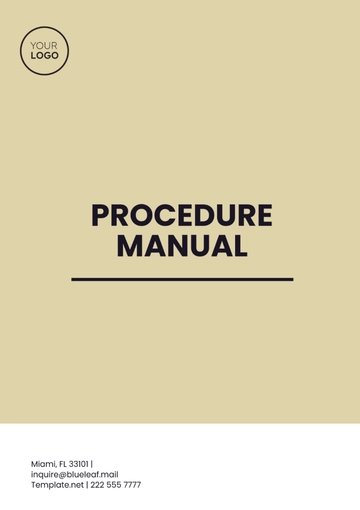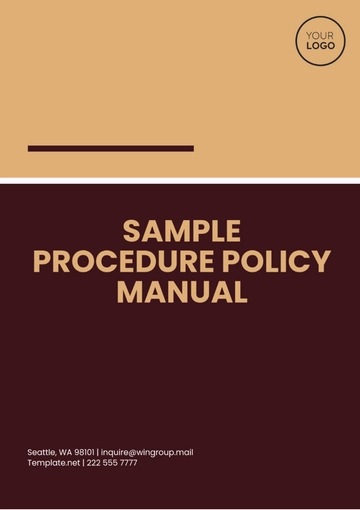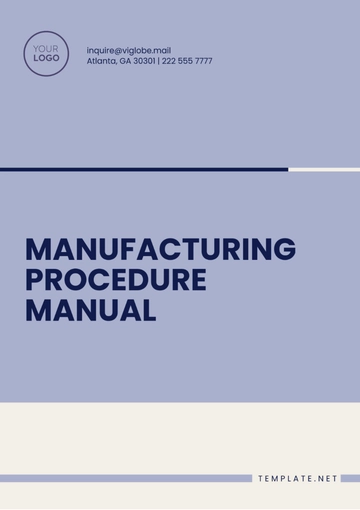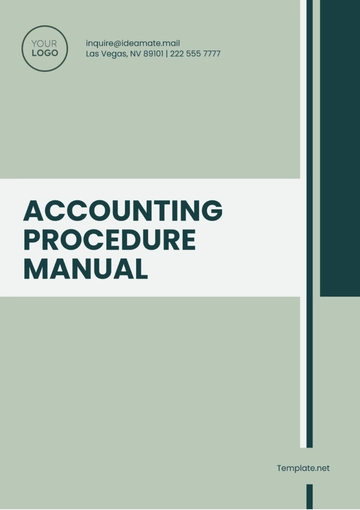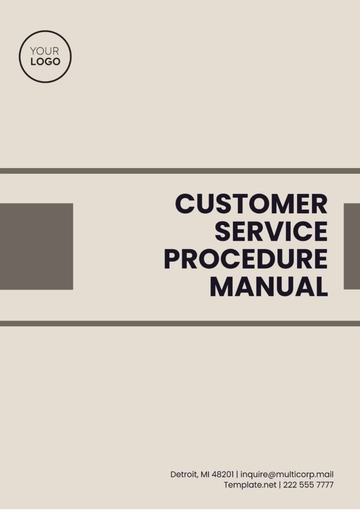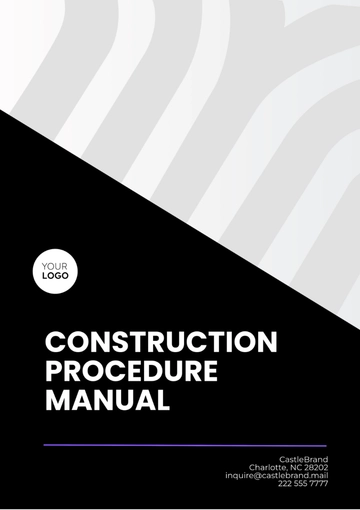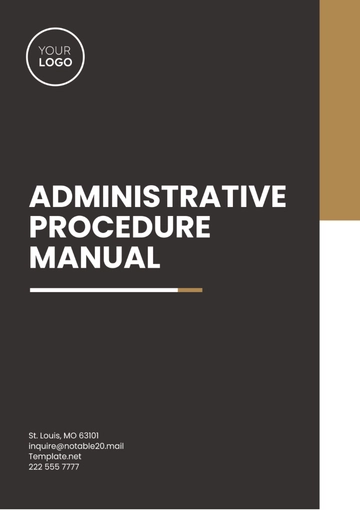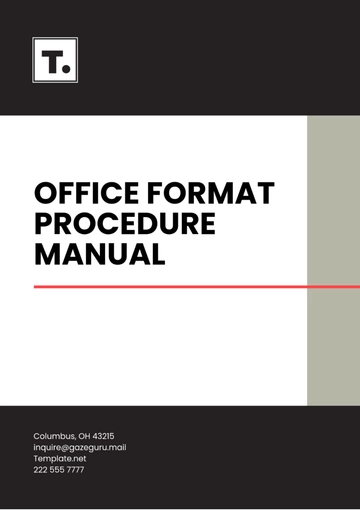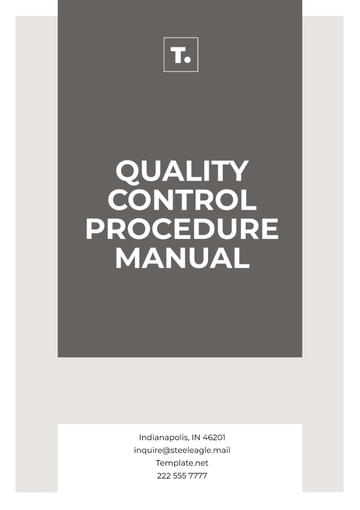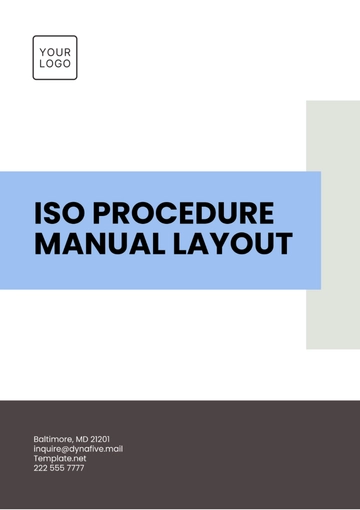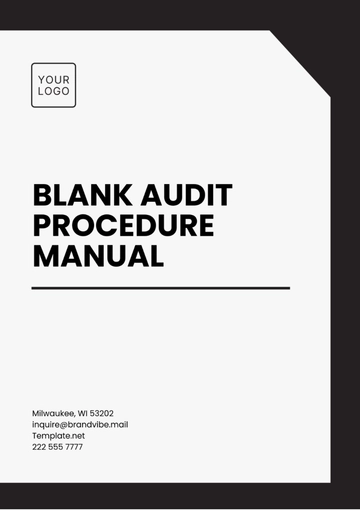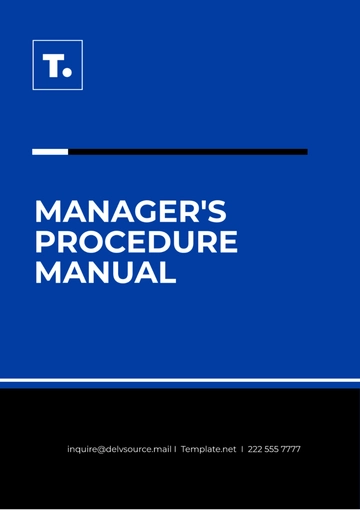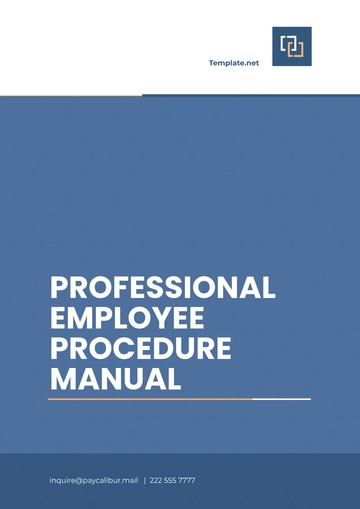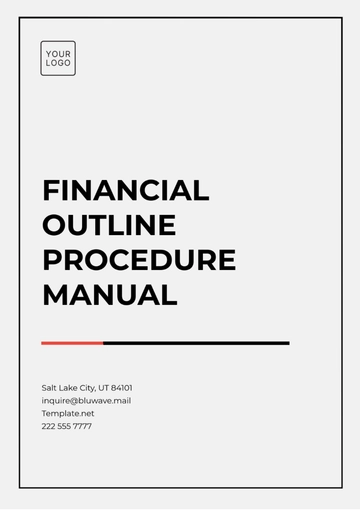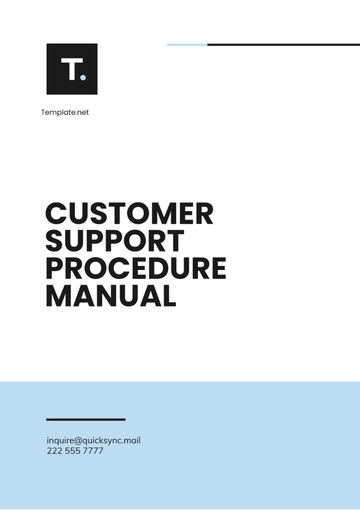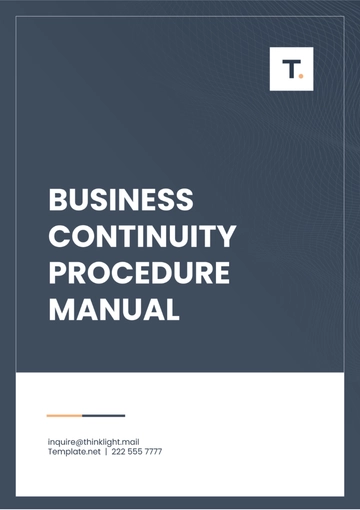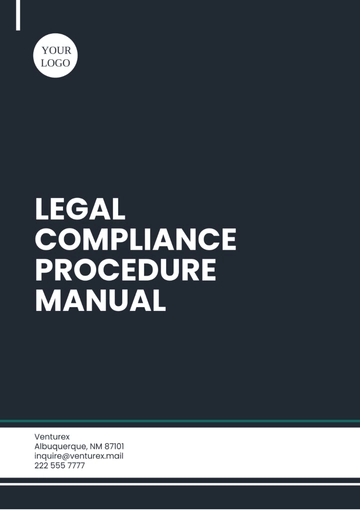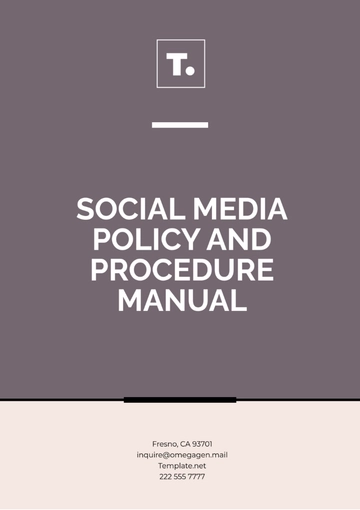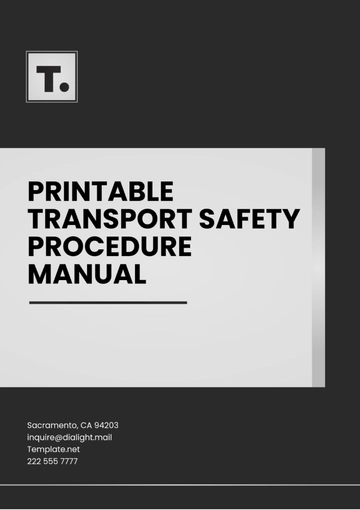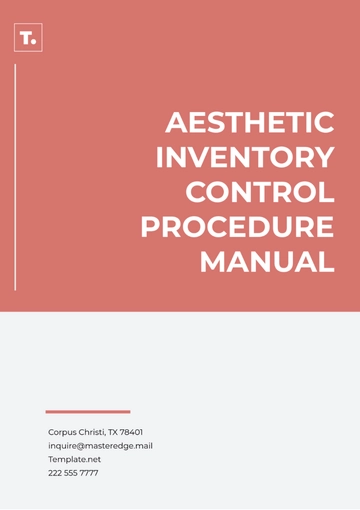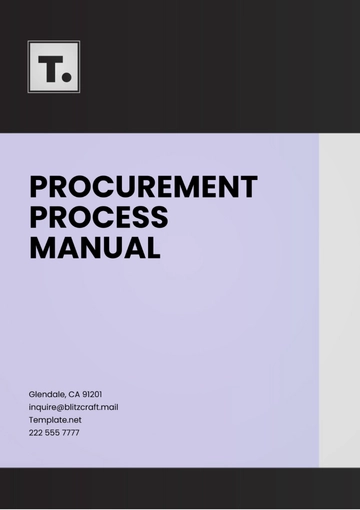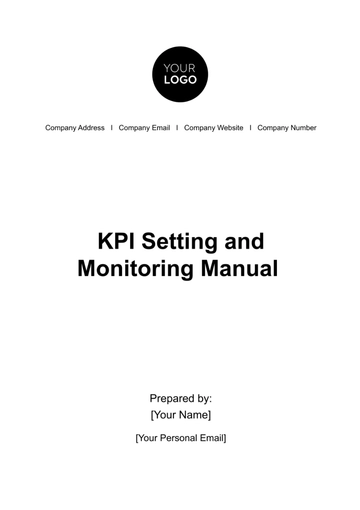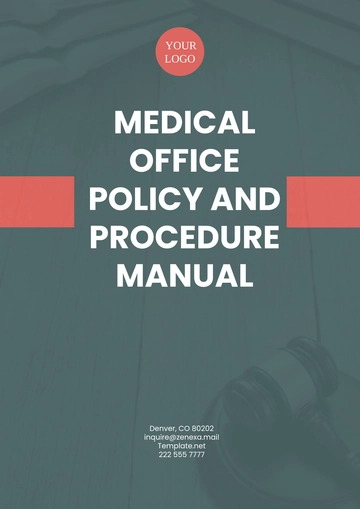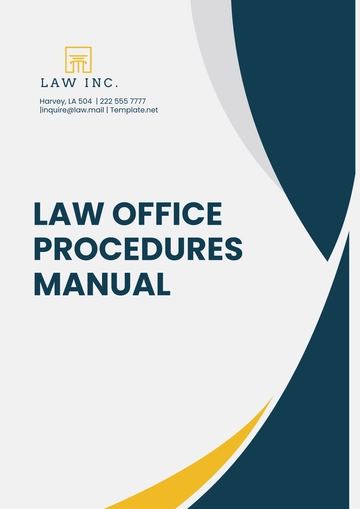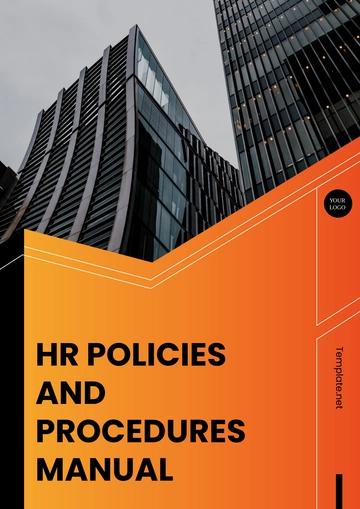Free Finance Payroll Risk Management Manual
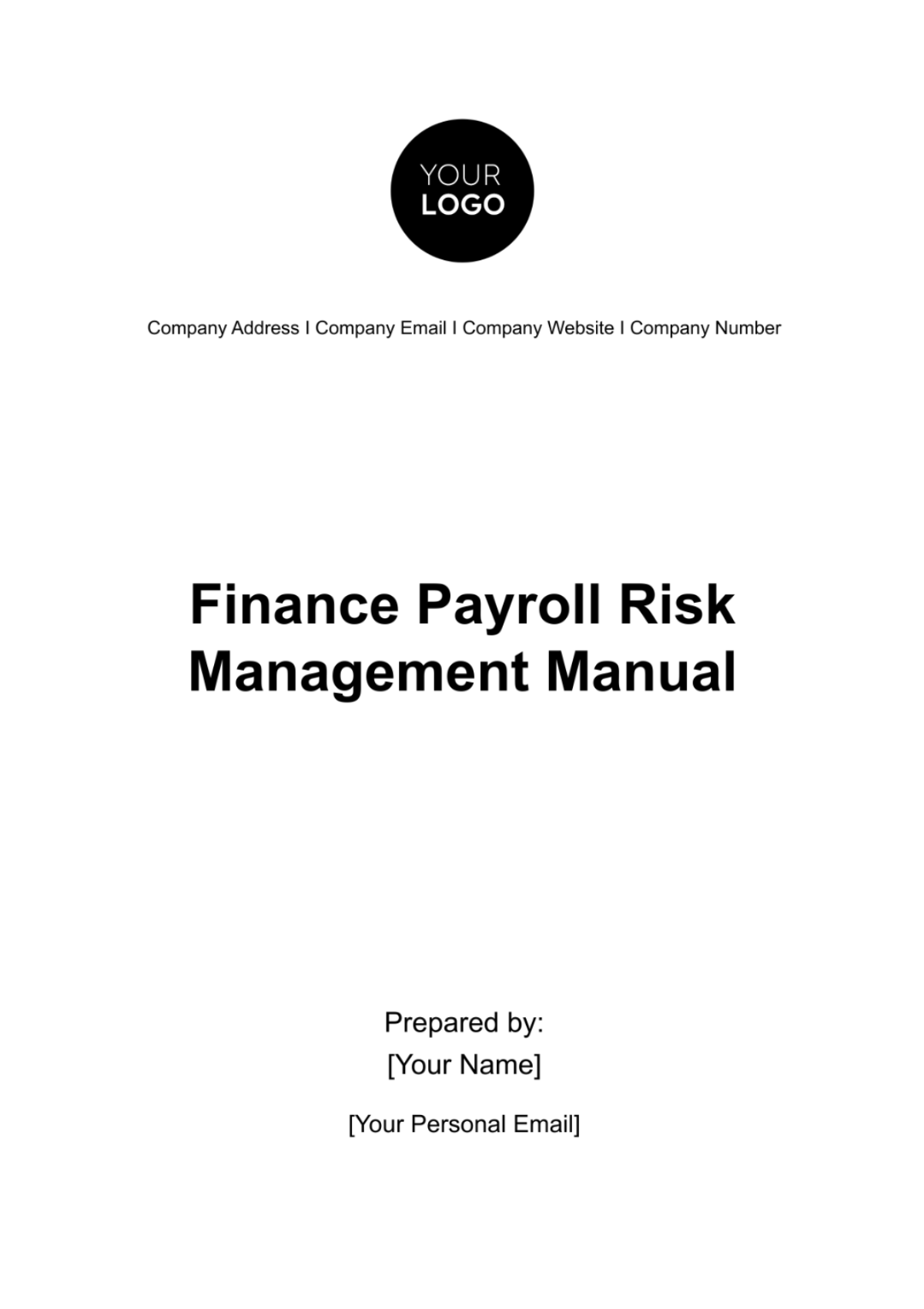
I. Introduction
This manual establishes a standardized framework for identifying, assessing, and mitigating risks in payroll operations. It serves as a guiding document for all personnel involved in payroll processes within the organization. The primary objective is to enhance the reliability and security of payroll operations, safeguarding the company's financial integrity, maintaining compliance with regulations, and building trust among employees. By following the guidelines outlined in this manual, the organization aims to fortify the reliability and security of payroll processes, ensuring financial integrity, regulatory compliance, and fostering trust among employees.
II. Internal Control Framework
A. Segregation of Duties
Clearly define roles and responsibilities within the payroll process to prevent concentration of control.
Assign specific tasks, such as accurate data input to data entry personnel, and review and approval of transactions to payroll managers.
B. Dual Authorization
Implement a dual authorization system for critical payroll transactions to minimize errors and fraud.
Ensure that adjustments to employee salary levels, for instance, require approval from both the payroll manager and finance director.
C. Access Controls
Restrict access to payroll data based on job roles.
Grant full access to payroll department personnel and provide HR personnel with read-only access to relevant employee data.
D. Training Programs
Establish ongoing training programs to ensure personnel understand and adhere to their specific roles in the payroll process.
Provide regular updates to keep staff informed about changes in policies, procedures, and regulations related to payroll operations.
III. Identification of Risks
A. Data Entry Errors
Implement procedures, including mandatory training and regular validation checks, to minimize data entry errors.
Establish immediate correction mechanisms upon identification of data entry errors to maintain accuracy.
B. Compliance Issues
Stay informed about changes in legislation and update payroll processes accordingly to address compliance risks.
Conduct regular compliance audits to ensure adherence to legal requirements and prompt resolution of discrepancies.
C. Security Vulnerabilities
Mitigate security risks related to payroll data through the implementation of encryption measures.
Conduct regular security assessments and audits to identify and address potential vulnerabilities proactively.
D. Fraud Prevention
Implement proactive measures to detect and prevent fraudulent activities within the payroll system.
Conduct periodic reviews and investigations to identify any suspicious patterns or anomalies, ensuring a secure payroll environment.
IV. Impact Assessment
A. Methodology
Assess the impact of identified risks, incorporating financial consequences and potential harm to the company's reputation.
Share insights on impact assessment through designated communication channels through secure email communication.
B. Documentation
Maintain comprehensive documentation of the impact assessment process using the company's centralized document management system.
Ensure accessibility to authorized personnel only.
Share sensitive impact assessment records securely via encrypted email communication.
C. Communication
Disseminate impact assessment findings through clear communication channels, including internal newsletters, team briefings, and secure email distribution lists.
Utilize secure email systems and encrypted communication tools to ensure the confidentiality and integrity of impact assessment information.
V. Internal Compliance Procedures
A. Policy Updates
Stay informed about changes in legislation affecting payroll operations through industry publications, legal updates, and governmental notifications.
Ensure timely updates to internal policies and procedures.
Utilize company-wide announcements, intranet platforms, and email communications.
B. Regular Audits
Conduct regular internal audits using the company's audit management system to ensure adherence to policies and external regulations.
Generate automated compliance reports and communicate findings through secure email distribution to relevant stakeholders.
C. Documentation and Reporting
Establish robust documentation practices using the company's document repository with controlled access and version control.
Generate regular compliance reports through the company's reporting tools.
D. Escalation Procedures
Utilize secure email communication and designated reporting channels to escalate identified compliance issues to the appropriate management level, ensuring swift resolution and proper documentation.
VI. Information Security Measures
A. Encryption Protocols
Utilize AES-256 encryption protocols to secure sensitive payroll data, ensuring that only authorized personnel with the necessary decryption capabilities can access and interpret the information.
Update encryption keys bi-monthly as outlined in the company's security policy, enhancing data security through regular key rotations.
B. Access Controls
Clearly define and enforce access controls within the payroll system, restricting system access based on job roles and responsibilities.
Employees will be granted access only to the information necessary for their specific duties, following the principle of least privilege.
Conduct quarterly reviews of access permissions as part of routine security audits, ensuring that adjustments are promptly made to reflect changes in employee roles or responsibilities.
C. Secure Communication Channels
Safeguard the transmission of sensitive payroll information by utilizing end-to-end encrypted email communication. This ensures that only authorized individuals can access and interpret the contents of the communication.
Implement a Virtual Private Network (VPN) for remote access, guaranteeing secure and encrypted communication channels for all remote connections to the payroll system.
D. Regular Security Audits
Enhance data security through monthly security audits, utilizing advanced cybersecurity tools such as intrusion detection systems and vulnerability scanners.
Any vulnerabilities identified will be promptly addressed to maintain the integrity of the payroll system.
Document and address any identified vulnerabilities within a week of discovery, maintaining a detailed audit trail of actions taken for transparency and accountability.
VII. Incident Response Plan
A. Identification and Reporting
Train employees through quarterly workshops to recognize and promptly report unusual activities or potential security incidents.
Clear communication channels, including the designated email address will be provided for incident reporting.
Ensure all employees are aware of the incident reporting email address and understand the process for reporting incidents promptly and securely.
B. Investigation Procedures
In the event of an incident, a designated incident response team comprising IT, HR, and legal personnel will conduct a thorough investigation within 24 hours of incident reporting. This team will determine the severity and scope of the security incident.
Employees need to be aware that in case of an incident, a dedicated incident response team is in place to investigate promptly, ensuring a swift and comprehensive analysis.
C. Communication Protocols
Establish a clear incident communication plan, defining roles and responsibilities for internal and external communication during security incidents.
Incident notifications will be disseminated through secure communication channels within one hour of incident identification.
Employees must be aware of the incident communication plan to ensure effective and timely dissemination of information during security incidents.
D. Resolution and Recovery
Develop a systematic approach for resolving security incidents within 48 hours of identification.
Implement recovery measures, including data restoration and system patching, within 72 hours to minimize disruptions to payroll operations.
Employees need to understand that, in case of a security incident, the company has established a structured process for resolution and recovery to ensure the swift restoration of normal payroll operations.
E. Post-Incident Analysis
Conduct a post-incident analysis within two weeks of resolving the incident.
Update incident response procedures based on analysis findings, incorporating lessons learned to enhance the overall security framework.
Ensure that all employees are aware that post-incident analyses are conducted to continually improve the incident response procedures and overall security framework.
VIII. Integration of Technology
In the dynamic landscape of payroll management, the integration of technology is paramount to streamline processes. The following table outlines the key technologies employed, providing detailed information on their functionalities, and step-by-step instructions for effective implementation:
Technology | Details | Step-by-Step Instructions |
[Biometric Authentication] | [Utilizes fingerprint recognition for secure access to payroll systems, enhancing data security and preventing unauthorized access.] |
|
The integration of technology in payroll management brings forth a myriad of benefits. Biometric authentication adds an extra layer of security, mitigating risks associated with unauthorized access. The integration of these technologies optimizes payroll operations, ensuring precision, security, and efficiency in the management of financial processes. This not only saves time but also contributes to the overall financial health and compliance of the organization.
IX. Monitoring and Reporting
A. Continuous Monitoring
Regularly review payroll transactions using automated monitoring tools and identify any unusual patterns or anomalies.
Conduct manual checks on payroll data to ensure accuracy and promptly address any discrepancies.
Monitor key performance indicators (KPIs) established for the payroll risk management framework to gauge its effectiveness.
B. Reporting Mechanisms
Use standardized reporting to document the status of payroll risks, mitigation efforts, and corrective actions.
Adhere to a predetermined reporting schedule for consistent and timely communication of risk reports to relevant stakeholders.
Ensure that reports provide clear insights into identified risks, mitigation strategies, and steps taken for corrective action.
X. Continuous Improvement
A. Regular Assessments
Periodically assess the entire payroll risk management framework to identify strengths, weaknesses, and areas for improvement.
Gather feedback from employees involved in payroll processes to gain insights into potential areas of enhancement.
Utilize assessment results to iteratively refine and enhance existing risk management processes.
B. Integration of Lessons Learned
Integrate insights gained from past incidents and audits into the risk management framework.
Update policies, procedures, and training programs based on identified opportunities for improvement.
Communicate changes and improvements resulting from lessons learned to ensure a cohesive understanding across the organization.
C. Adaptation to Industry Changes
Stay informed about changes in the regulatory landscape and industry best practices related to payroll management.
Regularly update the payroll risk management framework to align with evolving industry standards and compliance requirements.
Conduct training sessions to ensure employees are well-versed in any changes to policies or procedures resulting from industry updates.
D. Performance Reviews
Conduct routine performance reviews of the payroll risk management framework, analyzing key metrics and indicators.
Evaluate the framework's effectiveness in mitigating risks, ensuring compliance, and fostering a proactive risk management culture.
Use performance review outcomes to guide further improvements and refinements to the risk management processes.
- 100% Customizable, free editor
- Access 1 Million+ Templates, photo’s & graphics
- Download or share as a template
- Click and replace photos, graphics, text, backgrounds
- Resize, crop, AI write & more
- Access advanced editor
Proactively manage payroll risks with finesse using the Finance Payroll Risk Management Manual Template from Template.net! This editable and customizable manual, enriched by the AI Editor Tool, ensures a proactive approach to risk mitigation. Tailor it dynamically for efficient payroll risk management, shaping your strategy with precision. Get it immediately!
